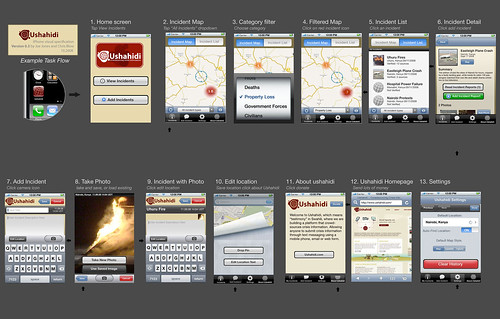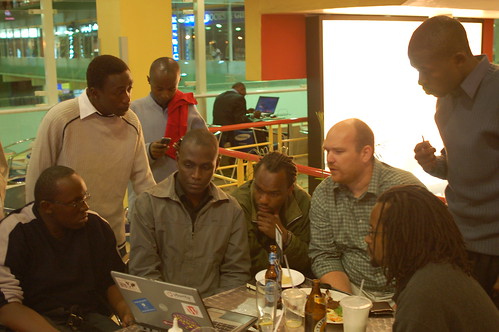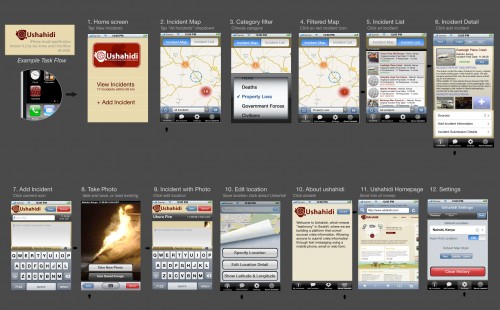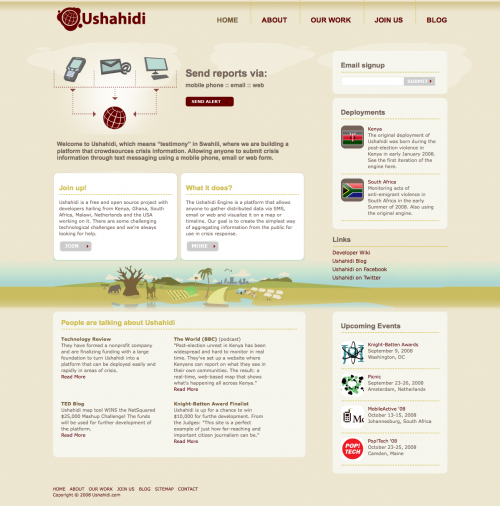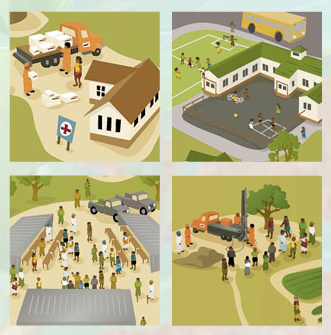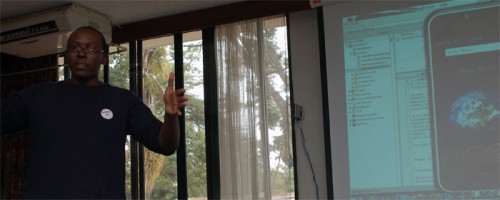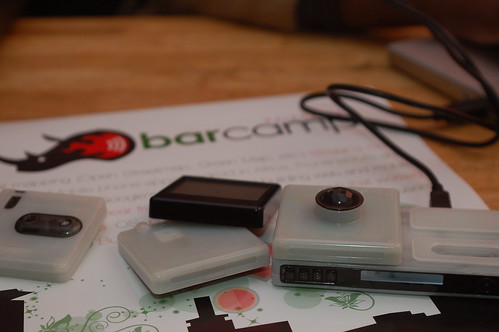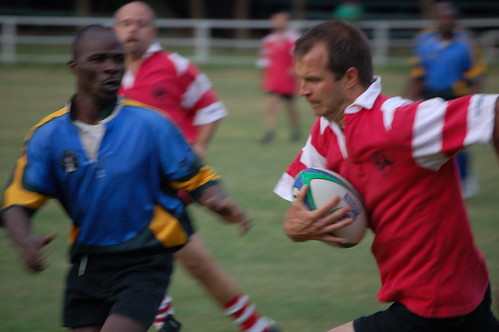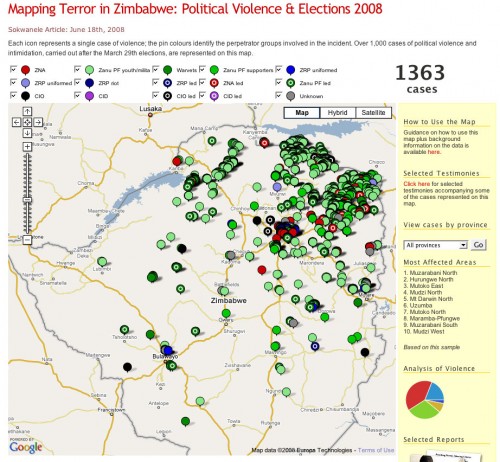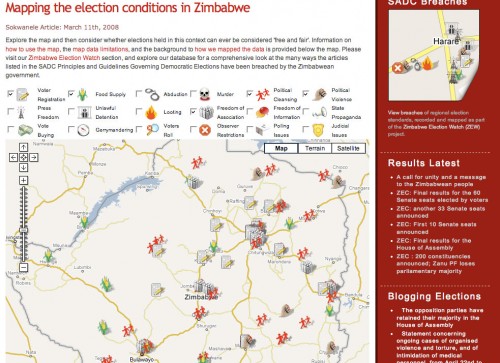Cheryl Heller, from Heller Communication Design, is spending the morning with us at the Pop!Tech Fellows program. We’re getting a crash course in branding and, “creating a brand promise”. Branding is more than a pretty logo or a nice website, it’s everything that you say, do or are perceived as. It’s what makes up the organization and it’s what people understand of you.
I try to pay attention to the Ushahidi brand, but I got a rude awakening as Cheryl asked us to each stand up and give an elevator pitch on our organization. Embarrassingly, I had to stand up and stutter through some half-baked pitch on Ushahidi. Needless to say, I’m already working hard at getting this whole brand a lot tighter – all the more important as we have a growing community that needs to easily speak about the brand as well.
Brand Promise
It’s what you promise to deliver. It’s not your mission, vision and values. It is the commitment that the business makes to each of the people who interact with it. It works two-ways – they first capture what is unique and valuable about an organization, and then inform the actions necessary to make it true. An Example:
“Ladies and gentlemen serving ladies and gentlemen.”
– Ritz-Carleton Hotels
Ushahidi’s Elevator Pitch and Brand Promise
I was paired with Heather Fleming, of Catapult Design, to help each other figure out our brand promise. Cheryl came by to help us boil down some of these thoughts and channel them towards what it should really be.
When I boiled down the Ushahidi elevator pitch (and I’m still working on it), I came up with this:
In a crisis or disaster, ordinary people have deeper insight into what’s going on around them than either the government or the news media. When you gather that information in aggregate, you start to see the bigger picture much more clearly.
Ushahidi is a platform that allows you to crowdsource crisis information by SMS, email and the web. We believe that gathering that information is key to saving lives and speeding recovery during an emergency.
It’s free and open source software, which means that anyone, anywhere in the world can use this platform.
After much iteration, and something I’m still working on, is the following for Ushahidi’s brand promise:
“We open a window to the world. Making the invisible visible by providing simple tools, used by ordinary people in extraordinary times so that others can act on it.”
Takeaways
An invaluable exercise is to really learn to listen to others talk about your organization and brand. Hearing Heather and Cheryl talk about what their perceptions of Ushahidi is was more valuable that me endlessly talking about what I think it is.
What is Ushahidi to you? How do you see it, and what’s the promise that you hear/see in us?

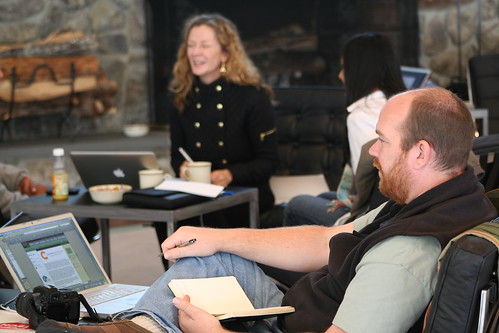



 UNICEF has two interesting skunkworks-like projects (among many more) that they talked about today.
UNICEF has two interesting skunkworks-like projects (among many more) that they talked about today. 
